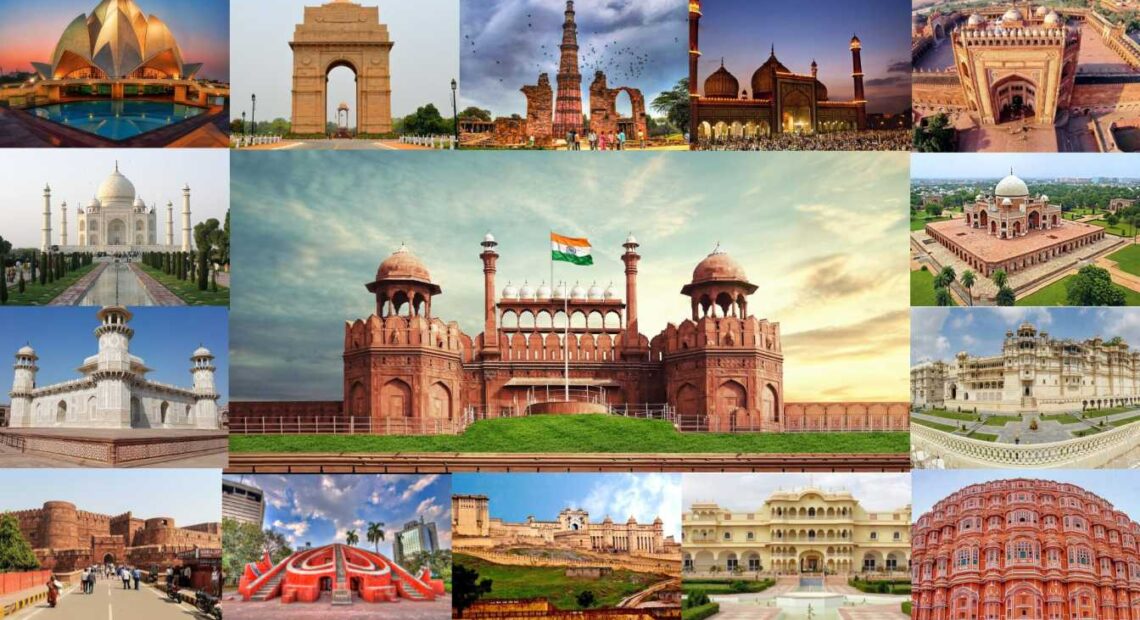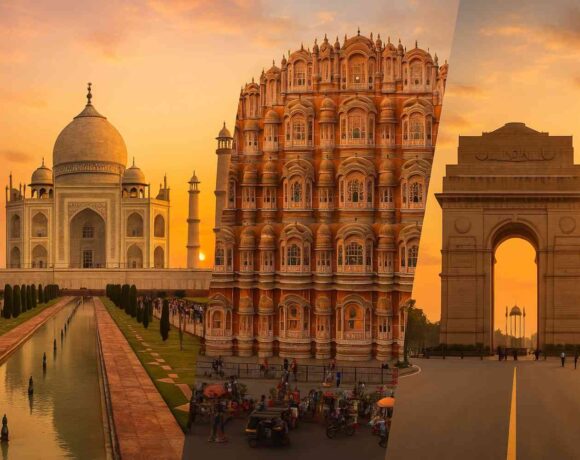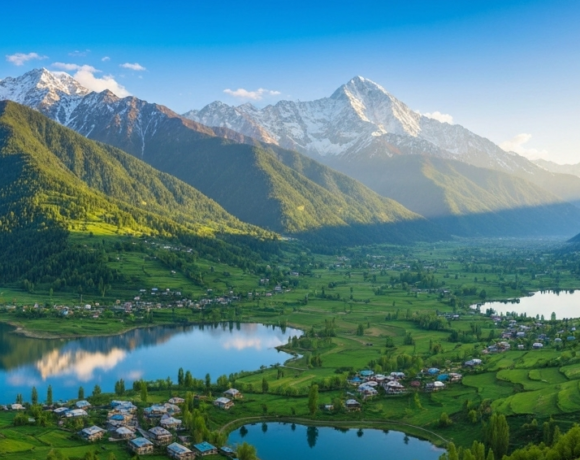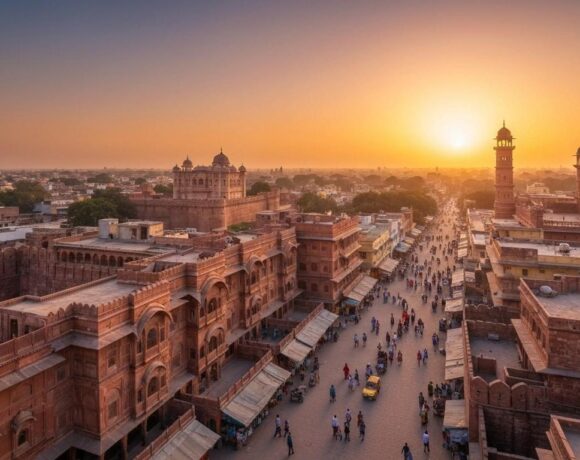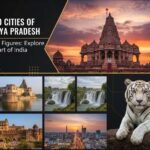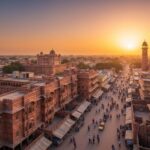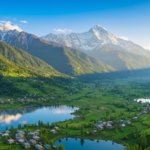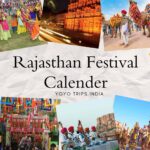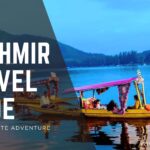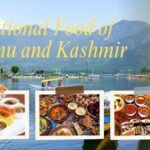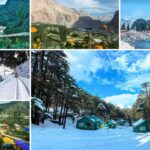The Golden Triangle tour is India’s leading travel circuit, a traditional start and perspective of vibrant pasts and fabulous presents for visitors. This popular road trip, linking the capital city Delhi, the Taj Mahal City Agra, and the Pink City Jaipur creates a triangle shape on a map, hence the name Golden Triangle India. It is a journey through centuries of history, multi-culture, and glorious built heritage.
This blog takes a deep dive into the heart of the Golden Triangle, complete with the essential places to visit in Golden Triangle India, as well as tips that will help you make your trip unforgettable.
Delhi: A Capital of Contrasts
The Golden Triangle journey will usually start in Delhi, a large city where ancient past and present day life co-exist. Delhi attractions provide an interesting contrast, ranging from the cramped streets and historic landmarks of Old Delhi to the ordered boulevards and public buildings of New Delhi.
Some of the main attractions are:
- Red Fort: A grand Mughal-era fortress, a UNESCO World Heritage site.
- Jama Masjid: India’s biggest mosque, a beautiful Mughal building.
- Qutub Minar: A tall minaret, a part of a complex dating to the Delhi Sultanate.
- Humayun’s Tomb: An ancestor of the Taj Mahal, famous for its lovely Mughal garden backdrop.
- India Gate: A war memorial and landmark.
- Lotus Temple: A breathtaking Baháʼí House of Worship famous for its flower-like form.
- Chandni Chowk (Old Delhi): A disordered but entrancing bazaar presenting a sensory overkill of color, noise, and aroma.
Agra: The Eternal Icon
Agra the city is indelibly associated with one of the world’s best-known landmarks. It is dominated by the heritage of the Mughal Empire. The undisputed centerpiece of the city naturally includes:
- The Taj Mahal: A masterpiece of Mughal architecture that stands as an icon of the power of enduring love. Looking at the Taj Mahal in the early morning or late afternoon, or indeed under the soft light of a full moon, is an absolutely magical experience.
- Agra Fort: A stunning red sandstone fort that housed Mughal emperors.
- Fatehpur Sikri: An exquisitely preserved city of the Mughals built by Emperor Akbar, some distance outside Agra.
- Itmad-ud-Daulah’s Tomb: Sometimes referred to as the “Baby Taj,” a stunning precursor to the Taj Mahal with detailed marble inlay work.
Fun fact: You can even have a peaceful boat ride on the Yamuna River for a unique view of the Taj Mahal.
Jaipur: The Royal Pink City

The trip completes in Jaipur, Rajasthan’s vibrant capital, famous for its buildings painted a deep pink color and its rich Rajput past. Jaipur visit carries you back in time to an age of kings and queens.
Major attractions are:
- Amer Fort: A glorious hill fort situated just beyond the city, famous for its beautiful architecture and elephant rides.
- Hawa Mahal: The famous “Palace of Winds,” with its delicate facade of hundreds of small windows.
- City Palace: A series of palaces, courtyards, and gardens located in the middle of Jaipur.
- Jantar Mantar: An astronomical observatory constructed by Maharaja Jai Singh II.
- Nahargarh Fort: Providing a bird’s-eye view of the Pink City, particularly stunning at sunset.
In Jaipur one can experience the royal grandeur with a camel ride near Amer Fort or get a unique perspective of the city with a hot air balloon ride over Jaipur. For a taste of authentic Rajasthani culture, a visit to Chokhi Dhani, a cultural village, is a must to conclude the trip.
When exploring Jaipur, it’s ideal to plan your visit during the cooler months between October and March, which is widely considered the best time to travel in Rajasthan, offering pleasant weather for sightseeing and desert experiences.
Understanding the Golden Triangle India Distance
The Golden Triangle India distance refers to the roughly equilateral triangle formed by these three cities. The distances are approximately:
| Places to and fro | Distance |
| Delhi to Agra: | Approximately 230 km |
| Agra to Jaipur: | Approximately 240 km |
| Jaipur to Delhi: | Approximately 280 km |
These cities are connected by a network of roads and railways, and travel between them is relatively easy, particularly when using Golden Triangle trip packages that usually incorporate comfortable transport.
Beyond Sightseeing: Activities and Experiences
A Golden Triangle tour is more than seeing monuments. It’s an experience of the soul of India. In addition to the major sights, don’t miss these experiences:
- Camel Ride at Jaipur: A classic means of seeing the desert landscape around the city.
- A boat ride on the Yamuna River in Agra: Provides a serene and alternative perspective on the Taj Mahal.
- Shopping in Local Bazaars: Explore the vibrant markets of Chandni Chowk (Delhi), Agra’s emporiums for marble and leather goods, and Jaipur’s Johari Bazar for textiles, jewelry, and handicrafts. Remember you can hone your bargaining skills.
- Viewing the Taj Mahal on a Full Moon Night: A truly unforgettable and ethereal experience.
- Hot Air Balloon Ride in Jaipur: Provides a stunning aerial perspective of the Pink City and its surroundings.
- Cultural experience: truly immerse in the culture of Rajasthan at Chokhi Dhani, Jaipur: where one can experience traditional folk music, dance, and traditional Rajasthani cuisine amidst a village ambience.
A Culinary Journey and Souvenir Hunt
Exploring the local food and collecting souvenirs is an integral part of the Golden Triangle experience:
Delhi: is renowned for its street food (“chaat”) such as Pani Puri, Aloo Tikki, and Papri Chaat to truly indulge in mouth exploding flavors and has array of selection for decorative jewelry, clothes, spices, and crafts in areas like Chandni Chowk for a one of a kind experience
Agra: is famous for Petha, a local sweet cuisine and the love symbol Taj Mahal. Which is then hunted as souvenirs as miniature replicas of the Taj Mahal. Some other souvenirs are marble inlay art, and leather items.
Jaipur: Jaipur is also a culinary delight—don’t leave without trying Dal Baati Churma, Gatte ki Sabzi, and other famous food in Rajasthan that showcase the region’s bold flavors and royal roots. Whereas souvenirs are concerned, every city provides special treasures. In Jaipur get colorful Rajasthani clothes, blue potteries, embroidered quilts, and lovely jewelry, including pieces made up of precious and semi-precious stones.
Best time to visit the Golden Triangle
The best time to visit Golden Triangle India is typically between October and March, when the weather across Delhi, Agra, and Jaipur is ideal for sightseeing and outdoor activities.
The standard tour duration for a Golden Triangle tour is approximately 3 to 4 days, with sufficient time to cover the main attractions in each city. But you can choose longer packages for a deeper exploration or to cover other nearby places.
There are different Golden Triangle tour packages offered, with varying budgets and travel preferences, ranging from short tours to luxurious and personalized ones. Most packages include city-to-city transportation, accommodation, and guided tours, making your trip planning easier.
Conclusion
Golden Triangle tour is a concentrated but complete experience of India’s diverse heritage, lively culture, and architectural splendor. From Delhi’s historic roads to Agra’s timeless splendor of the Taj Mahal and Jaipur’s royal grace, this circuit imprints itself on every visitor forever. Regardless of your interest in history, fascination for architecture, or desire for cultural experience, traveling through the places to visit in Delhi Agra and Jaipur guarantees an unforgettable trip to the core of this phenomenal nation. Think of checking out various Golden Triangle trip packages to determine the ideal method for starting this golden journey.
While the Golden Triangle covers some of the top highlights, there are countless other best places to visit in North India that offer majestic mountains, spiritual experiences, and lush valleys beyond this iconic circuit.
FAQs
Q: Is the Golden Triangle a reason to visit India?
A: Yes, certainly! The Golden Triangle of Delhi, Agra, and Jaipur is an intriguing entry into India’s varied landscapes, historical wealth, and energetic culture, particularly for the first-time traveler. The popular tourist trail delivers a superb range of India’s delights in a fairly tolerable period and travel distance.
Q: What are the attractions of the Golden Triangle of India?
A: The tourist spots of the Golden Triangle are many and iconic. Delhi boasts the Red Fort, Qutub Minar, Humayun’s Tomb, India Gate, Lotus Temple, Jama Masjid, and Chandni Chowk. Agra has the Taj Mahal, Agra Fort, Fatehpur Sikri, and Itmad-ud-Daulah’s Tomb. Jaipur has the Amber Fort, Hawa Mahal, City Palace, Jantar Mantar, and Jal Mahal.
Q: What is the Golden Triangle renowned for?
A: The Golden Triangle is renowned for presenting a combination of India’s ancient grandeur, architectural masterpieces, and cultural diversity. It gives a glimpse into the opulence of the Mughal period, the bravery of Rajputana, and Delhi’s ancient history as a center of power. The circuit is also famous for its well-set tourist infrastructure, and hence it is comparatively easy for foreign tourists to travel around.
Q: When is the best time to travel to the Golden Triangle?
A: The best time to travel to the Golden Triangle is between October and March, which is the winter season. The climate is nice with warm sunny days during the day, and sightseeing is pleasant. Be advised that North India may have smog during winter, mainly Delhi.
Q: How long does it normally take to visit the Golden Triangle?
A: A standard Golden Triangle tour is typically 5 to 7 days long. This gives one sufficient time to visit the important sites in every city. The itineraries can be personalized according to interest and time, though.

